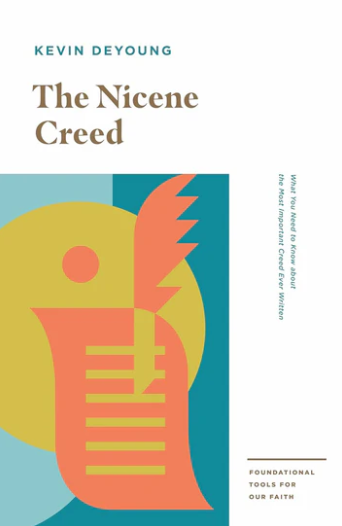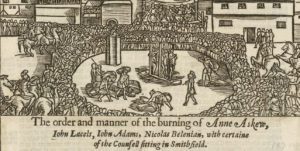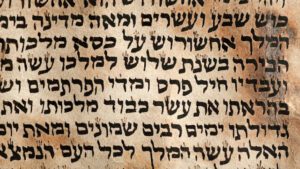Kevin DeYoung’s book on the Nicene Creed is a gift for Christians hoping to better understand the historic doctrine of the Trinity. Written in time for the 1700th anniversary of the Council of Nicaea, The Nicene Creed: What You Need to Know About the Most Important Creed Ever Written, strikes a balance between theology, history and practical encouragement. Those looking for a way through the jungles of the fourth-century trinitarian debates will find a sure guide to lead them between the thickets. Those seeking a concise introduction to key trinitarian terms and concepts will be helped as well. DeYoung helps us to see why the Nicene Creed matters and what its different parts mean for us today.
Nuance and charity
The Nicene Creed primarily follows the lines of the (381AD) confession, teasing out the meaning of each line while exploring their implications. These discussions are framed with historical insights that are sharp and apt. DeYoung highlights important factors in the construction of the creed that are left out of many popular (and some longer) explanations and offers a nuanced account of the various antagonists in the debates preceding the adoption of the creed. I appreciated his fair-minded treatment of the homoiousian bishops who wanted to ensure that the persons are genuinely distinct, and his acknowledgement of converse dangers from the allies of Athanasius who sometimes drove into “the heretical ditch on the other side of the road (p. 57).” Such nuances are often spurned in simplistic accounts of the fourth century, but were crucial in the resolution of the debates themselves [1]. Later, in his chapter on the Holy Spirit (Chapter 5), DeYoung invokes the Council of Florence to defend a very reasonable “through the Son” version of the filioque clause (though I’m not sure this would satisfy western diehards who insist the Spirit proceeds from the Father and Son as a single source) [2].

The Nicene Creed
Kevin DeYoung
The Nicene Creed
Kevin DeYoung
Purchase here:
Nicene Creed, The: What You Need to Know about the Most Important Creed Ever Written
Kevin DeYoung Explores the History, Meaning, and Importance of the Nicene Creed
The Nicene Creed is a fundamental text that Christians have memorized and recited in church services and personal prayers for centuries. Despite its deep roots, many believers today recite the creed as a routine, often without fully understanding its meaning and significance.
Insight and clarity
Meanwhile, DeYoung’s line-by-line approach yields excellent theological insights. For example, the introduction sets the Nicene disputes in the context of God’s tendency to use controversies “in order for the truth to be more fully known and articulated (p. 16).”
Chapter 1 (We Believe) points out the difference between Christian religion and its pagan rivals. While paganism majored on cultic practices and stories, Christianity was “irreducibly doctrinal (p. 29)”, concerned with precise beliefs. I had not thought of this before, but, as DeYoung points out, this difference is a significant fact to consider in light of the contemporary desire for more liturgical and ancient versions of Christianity.
Chapter 2 (Only Begotten) makes the absolutely crucial point (for all theology, but for this topic particularly where one-sided arguments always shortchange Scripture), that “Nicene orthodoxy teaches us to hold several truths at the same time (p. 40).”
Chapter 3 (One Substance) reminds readers that those who complain about Greek terms in the Creed “shouldn’t think that the New Testament was somehow ‘untainted’ by the concepts and terms of Greek philosophy (p. 47).”
In Chapter 4 (For Us and Our Salvation) DeYoung remarks that “It is easy for Christians to think that the work of Christ ended with his death on the cross… we can pay too little attention to the other three stages in his exaltation (p. 56).” Again, this is crucial. Christian faith proclaims a living Lord and a heavenly high priest—not just an historic sacrifice.
Chapter 7 (On Baptism) calls readers to consider the difference between our saving belief in Father, Son and Spirit, and our confession of one baptism for the forgiveness of sins: “It would sound strange, too self-reliant perhaps, to believe in our baptism. We do not put confidence in the sign as such or in the act that the minister performs. We trust in God; we confess our baptism (p. 82).”
Critiques
There were a couple of ideas that made me scratch my head in the midst of these edifying and stimulating insights. I was puzzled that DeYoung interprets “light from light” as a simple parallel of “God from God” (p. 39), without mentioning the analogy of “sun-and-radiance.” Sun-and-radiance was almost certainly the Fathers’ intention and would have provided an excellent example of his “several truths” point on the next page. The Son is a real Son, but he is also inseparably correlative. The Son proceeds from the Father like a ray from the sun.
Something more perplexing happens when DeYoung drops into the language of subsistence:
God is Father because Jesus Christ is his Son. At the same time, we also believe in one Lord Jesus Christ. This means there must be some way that this one God exists (or more technically, “subsists”) in three persons. That’s not the language the creed uses here, but the idea is hinted at by affirming our God as Father, Son, and Holy Spirit (p. 37).
I think I understand what he’s saying here, but his terminology is equivocal and seems to create the impression that the Person of the Father subsists as “three persons” [3]. This is a position mainstream Christianity does not hold. The lack of clarity in this section shows us why we need to keep reading and thinking. Trinitarian doctrine is complex, and it is hard to be precise and clear. The tradition that comes from Nicaea is not entirely uniform and we need good books to help us understand that tradition. This book, despite such aberrations, is certainly one of them.
Evangelicals have been playing catch-up with historic theology in the last few decades, wrangling over the relation between the Father and Son and the nature of the Persons of the Godhead. The debates haven’t always been conducted with charity or clarity. But they have been useful. God still uses controversies to help his children “know and articulate the truth.” DeYoung’s The Nicene Creed is a well calibrated offering that will help students, ministers and thoughtful lay people know and articulate the truth. The book puts us Christians in touch with our great forebears. It helps us appreciate the struggle and wisdom that was required to unify a church of imperfect believers. The Nicene Creed reminds us that being evangelical doesn’t mean we have to be
primitivists trying to re-create the faith as if we were stranded on a desert island with nothing but our Bibles. We believe in listening to the church, in learning from the church, and in looking to the church for those doctrinal formulations that have stood the test of time (p. 72).
Amen to that.
[1] For a deeper dive into the debates regarding the relation between the Father and the Son, click here.
[2] “Filioque” is Latin for the clause “and the Son.” The clause was inserted by the Roman Catholic Church after the original words of the Creed, which had stated that the Holy Spirit “proceeds from the Father” only. This unilateral addition occasioned the Great Schism between the Eastern and Western Church of 1054AD.
[3] The equivocation is between two senses of the word “God.” In the Creed, as in John 1:1 “God” can refer to (i) the Father as the source of the Godhead and (ii) the undivided Divinity shared by Father, Son, and Spirit. The confusion comes in where DeYoung slips between the first and second use.















